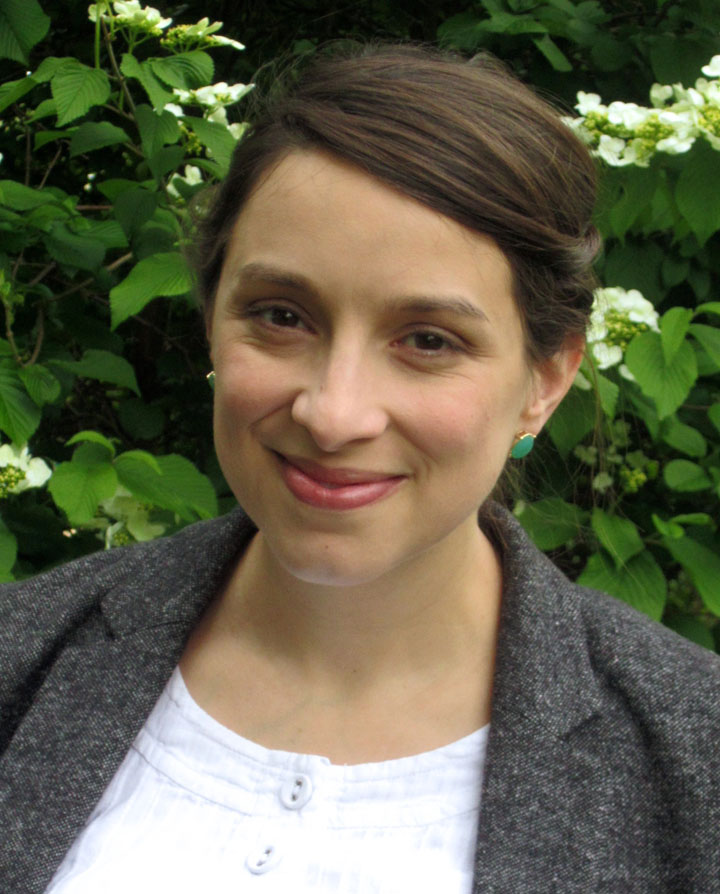
In popular media, and even in scholarly research, religion is often linked to disaster as a way of coping with the devastating aftermath. But religion comes into play in people’s response to the events leading up to and during a disaster as well, argues Lori Veilleux, a Ph.D. candidate in religous studies. Veilleux makes the case for these broader, and more varied links using a specific historical event as the framework for her dissertation Religion and Disaster: A Case Study of Boston’s Response to the 1832 Cholera Epidemic. Veilleux will be awarded her degree during this weekend’s Commencement ceremony.
Veilleux has had in interest in the relationship between religion and disaster since her early days of graduate school. But it wasn’t until she read Charles Rosenberg’s The Cholera Years that the Boston case became the platform for her research.
“Rosenberg’s book is the go-to resource on cholera in the United States, but it passed over Boston in the first epidemic, saying that the city didn’t really have many deaths,” Veilleux said. But the book did mention activities the city organized to combat the epidemic, like fast day observances. Those details were enough to inspire Veilleux to look deeper into how Boston handled the arrival of the disease. She discovered that city residents mounted an astonishing campaign of cholera prevention and preparation measures, and religion played a significant role in their activities.
“Religion and science were working totally in concert at this time. Most Bostonians understood things like cholera medicines and preventative sanitary measures as gifts from God. They felt a religious duty to use these gifts to their fullest extent,” Veilleux said.
She also noticed that this can-do approach was distinct from the way many other cities chose to combat the disease, a reaction, Veilleux believes, that was dictated by religion as well.
“Boston was a unique religious environment at the time. Transcendentalism was about to come onto the scene and there was a strong Unitarian presence that emphasized, among other things, an intense interest in the laws of nature and virtue development. Religious denominations that were dominant in other cities didn’t have that same emphasis,” Veilleux said.
Veilleux used that historical analysis as the framework for the theoretical piece of her dissertation. Much of that focuses on a critique of what she sees as the dominant perspective on religion and disaster. While existing research on the topic is somewhat limited, Veilleux found that the primary message in scholarly writing on the links between religion and disaster is that religion comes into use only after a disaster event — helping people cope, answering existential questions and making sense of what just occurred.
While Veilleux’s research doesn’t deny that possiblity, she found that there’s a much broader use of religion beyond what comes into play in the aftermath of disaster.
“It’s not just about coping with a disaster after the fact. There’s a lot of religion that’s going on beforehand. So when, during the Boston case, they’re asking what sanitary measures to adopt, it turns out that they’re thinking about religion then. They’re not coping with an existential crisis caused by the disaster, they’re solving practical problems,” Veilleux said.
Veilleux also found that people used the impending disaster to address religiously motivated concerns and goals.
“In the example of Boston, people who had long been worried about vice and intemperance in the city used the opportunity space created by cholera to step in and say now is the time to address these problems,” Veilleux said.
Much of Veilleux’s theoretical work focuses on the concept of disaster vulnerability, which is the idea that existing political, economic, and social dynamics help determine the uneven distribution of disaster risks and losses. Through that lens, Veilleux argues, disasters are always in part man-made, and their effects can be mitigated by combatting disasters starting with the most vulnerable populations.
Veilleux points out that a better understanding of how people use religion in disaster situations could help experts better allocate resources and communicate threats to those at risk. Current research generally puts religion’s role in disaster situations into one of two camps: that religious beliefs and practices discourage practical prevention and relief efforts or that they are useful resources for recovery that ought to be supported and encouraged.
“I think that both of those those perspectives take a narrow view of the situation and involve a poor understanding of what religion is and does,” Veilleux said.
While Veilleux acknowledges that much more work needs to be done to fully understand the links between religion and disaster, both in real time and using existing case studies situated in other times and cultures, she’s hopeful that her work will fuel future studies and ultimately positive changes in disaster prevention, response, and recovery practices. She’s especially concerned with the effects climate change will have on the incidence and severity of disasters around the world.
“At the most basic level, this is a practicality-oriented exercise,” Veilleux said. “Developing our scholarly understanding of the links between religion and disaster and making it more robust, with the concept of disaster vulnerability in mind, will help us going forward.”
